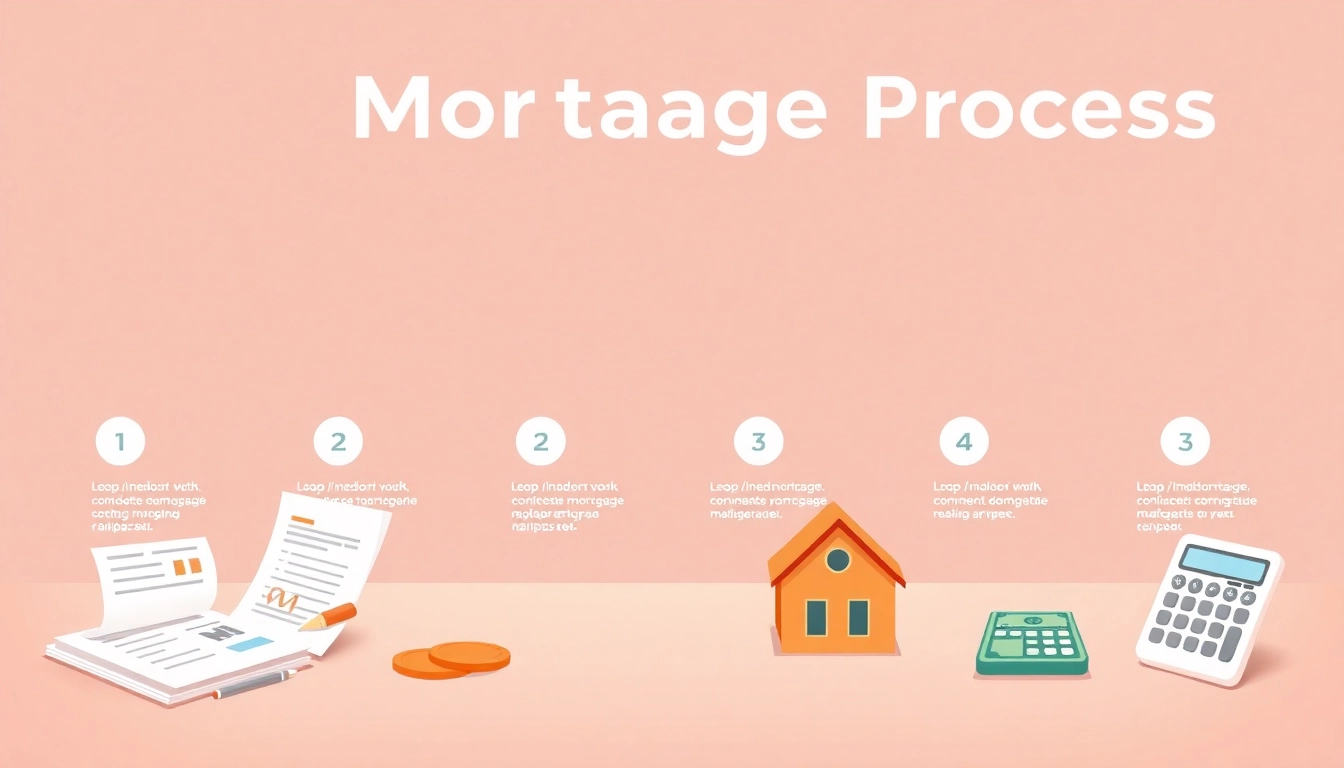Understanding SBA Loan Requirements
Small Business Administration (SBA) loans are an attractive option for entrepreneurs seeking to finance or expand their businesses. With government backing, these loans often come with lower interest rates and longer repayment terms compared to traditional bank loans. However, applying for an SBA loan can be daunting if you are unfamiliar with the sba loan requirements. This comprehensive guide will walk you through everything you need to know, from the nature of SBA loans to the specific eligibility criteria, types of loans available, and best practices to follow during the application process.
What Are SBA Loans?
SBA loans are a category of loans backed by the U.S. Small Business Administration designed to help small businesses obtain financing that might not be available through conventional lending sources. These loans come in various types, including 7(a) loans, 504 loans, and microloans, each serving different business purposes. The SBA does not directly lend money; instead, it guarantees a portion of the loan, reducing the risk for lenders and enabling them to offer better terms to borrowers.
Who Is Eligible for SBA Loans?
Eligibility for SBA loans generally hinges on several factors: the business type, size, location, purpose of the loan, and the borrower’s personal credit history. To qualify, applicants must be a small business, as defined by the SBA, and must occupy a physical location that operates independently. Additionally, businesses should meet specific size standards outlined by the SBA, which vary by industry. Those involved in speculative activities, such as investing or real estate development, typically do not qualify for SBA loans.
Key Requirements for SBA Loans
To secure an SBA loan, applicants must meet several key requirements, including:
- Creditworthiness: A good credit score (typically 680 or above) enhances the likelihood of approval.
- Operational Experience: Demonstrated business experience and management skills are necessary.
- Business Plan: A detailed business plan that outlines the intended use of funds is essential.
- Collateral: While not always required, providing collateral can strengthen your application.
Types of SBA Loans and Their Requirements
There are several types of SBA loans, each designed for specific purposes and with unique requirements.
7(a) Loans: General Purpose Requirements
The 7(a) loan is the most popular SBA loan type for small businesses, allowing for flexible use of funds, including purchasing inventory, equipment, or even refinancing existing debt. To qualify, businesses must:
- Demonstrate the ability to repay the loan based on cash flow.
- Provide a personal guarantee from owners who own 20% or more of the business.
- Present relevant financial documents, including profit and loss statements and personal financial statements.
504 Loans: Specific Asset Requirements
504 loans are specifically intended for purchasing fixed assets like real estate or large equipment. These loans typically have lower down payments and longer terms. To qualify, businesses must:
- Plan to use the funds for a specified purpose related to business growth or improvement.
- Demonstrate that the project will create or retain jobs.
- Meet net worth and income requirements set by the SBA.
Microloans: Unique Qualifications
Microloans are smaller loans (up to $50,000) intended for new or existing businesses, especially in underserved communities. These loans can be used for working capital, inventory, or equipment. Requirements for microloans include:
- Demonstrating a viable business plan.
- Meeting specific credit and capability assessments by the lender.
- Engaging in ongoing business training or mentorship programs provided by the microloan program.
Application Process for SBA Loans
The application process for an SBA loan can vary based on the lender and the specific loan type. However, the general steps are similar across instances.
Preparing Your Documentation
Before beginning the application process, ensure you gather the necessary documents, which often include:
- Personal financial statements for each owner.
- Business financial statements, including balance sheets and income statements from the previous two years.
- Tax returns — both personal and business — for the last three years.
- A comprehensive business plan, including a description of the business, objectives, market analysis, and financial projections.
Submitting Your Application
Once you have all your documentation ready, you can submit your loan application through your chosen lender. Many lenders offer options for submitting applications online, which often expedites the process. Ensure you clearly present your loan purpose and illustrate its potential impact on your business’s growth and job creation.
Common Application Pitfalls
Many applicants encounter common pitfalls during the SBA loan application process, including:
- Incomplete Documentation: Ensure all requested financial statements and documents are included.
- Lack of a Solid Business Plan: A well-articulated plan is critical; weak submissions may lead to rejections.
- Poor Communication: Maintaining open lines of communication with your lender can mitigate misunderstandings and speed up processing.
Best Practices for Meeting SBA Loan Requirements
Successfully acquiring an SBA loan requires preparation and strategic planning. Implement the following best practices to increase your chances of approval.
Building a Strong Business Plan
Your business plan is a crucial aspect of the loan application. It should not only outline your business model but also demonstrate your capacity for growth and how you plan to utilize the loan funds. Utilize market research, competitor analysis, and financial forecasting in your plan to present a robust case to lenders.
Enhancing Your Creditworthiness
A higher credit score can significantly improve your chances of securing an SBA loan. Review your credit report, clear up any inaccuracies, pay down debts, and avoid opening new credit accounts before you apply. If you’re a new business without an established credit history, consider personal credit until your business has built sufficient credibility.
Understanding Financial Statements
Having a good grasp of your financial statements is critical, as lenders will base their decisions on this information. Prepare to explain your cash flow, assets, and liabilities comprehensively. Knowing how to interpret your financial data will not only help in securing funding but also in managing your business effectively.
Financing Options Beyond SBA Loans
While SBA loans are an excellent option for many businesses, other financing avenues may be available. Exploring these options can provide alternative strategies to secure the necessary funding.
Traditional Bank Loans: Requirements Comparison
Traditional bank loans are another means of financing a small business. Compared to SBA loans, bank loans typically have stricter requirements, including a better credit score, a strong financial history, and more comprehensive collateral demands. Understanding both the benefits and the challenges of conventional loans compared to SBA loans can help in making an informed choice.
Alternative Lending Solutions
Alternative lenders offer a range of solutions from peer-to-peer lending to online business loans that may have less stringent requirements. However, these options often come with higher interest rates, thus weighing the costs and benefits is essential. Research multiple lenders to find one that aligns with your business needs.
Grants and Other Funding Sources
Many businesses can access grants that do not require repayment, which can be particularly beneficial if you align with specific criteria, such as minority-owned businesses or startups within particular sectors. It is essential to investigate the various grant opportunities available through federal, state, and local programs to diversify your funding sources.












Leave a Reply